US to hand over M60 AVLB tank bridge layers to Ukraine
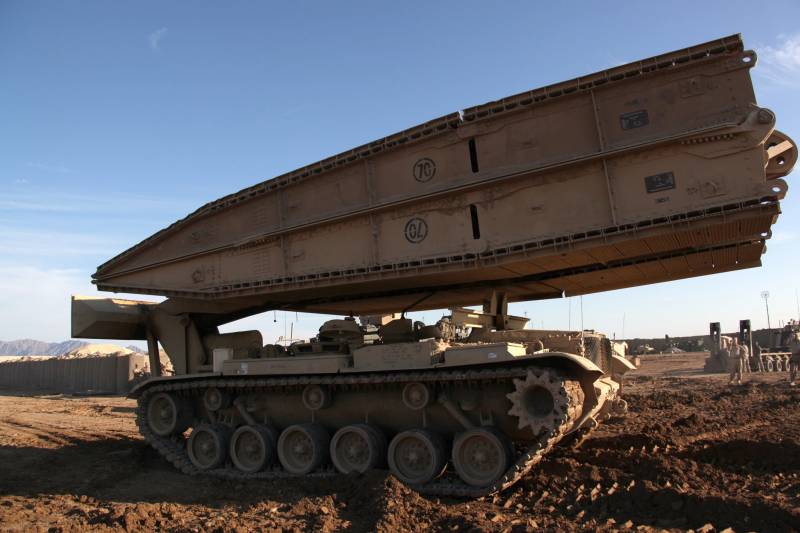
M60 AVLB bridgelayer in Iraq. The "70" mark on the bridge structure indicates the carrying capacity in short tons.
Recently, foreign states have repeatedly transferred various engineering equipment and equipment to the Kyiv regime, and another episode of such assistance is expected soon. The United States announced the future delivery of several tank bridgelayers M60 AVLB. These armored vehicles are intended for mechanized formations and should help them overcome various natural or artificial obstacles.
In the next package
On March 3, 2023, the US Department of Defense announced the formation of another package of military technical assistance for Ukraine. Military products with a total value of approx. $400 million is allocated under the Presidential Drawdown of Security Assistance (PDA). This is already the 33rd presidential package allocated since the summer of 2021.
The Pentagon reports that the package includes additional ammunition of various types and calibers for cannon and rocket artillery, engineering and demolition equipment, equipment and spare parts for equipment, etc. It is curious that the number of delivered products is again not indicated.
A separate line in the package are the M60 Armored Vehicle-Launched Bridge tank bridge layers, which the United States has in large quantities. An unnamed number of such objects will be sent to Ukraine. Together with them, the corresponding number of bridge structures of an unnamed model will be shipped.
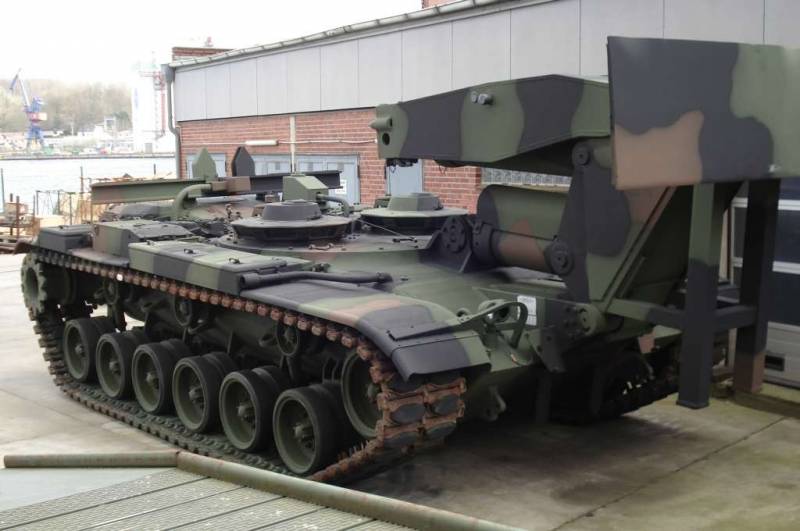
Armored vehicle without a bridge structure
The terms for the transfer of the announced package, as in previous times, are not called. It can be expected that the transportation of ammunition, as a simpler process, will take no more than a few weeks. At the same time, the preparation of bridge-laying armored vehicles and their subsequent shipment to the recipient will take more time. In addition, the timing of delivery and subsequent commissioning may be affected by the need for crew training.
After arriving in Ukraine, the American M60 AVLB bridgelayers will replenish the existing fleet of engineering equipment, which already includes obstacle crossing facilities. So, after the collapse of the USSR, independent Ukraine got a significant number of bridge layers based on the T-55 tank. In addition, last year Germany provided the Kyiv regime with 16 Biber vehicles of a similar purpose on the chassis of the Leopard 1 tank.
Still in operation
In the early sixties, the army and the USMC were switching to the new M60 Patton medium tank. At the same time, new auxiliary machines were developed on the basis of its chassis, incl. tank bridge. The latter received the designation Armored Vehicle-Launched Bridge and was developed in 1963 by Engineer Research & Development Laboratories and General Dynamics.
Serial production of M60 AVLB bridgelayers started already in 1964 at Chrysler. It lasted until 1973, and during this time more than 370 armored vehicles were built, as well as several hundred bridge structures for them. In 1978, an additional batch of 14 bridge layers was made. 6 more units. the army acquired in 1980-81.
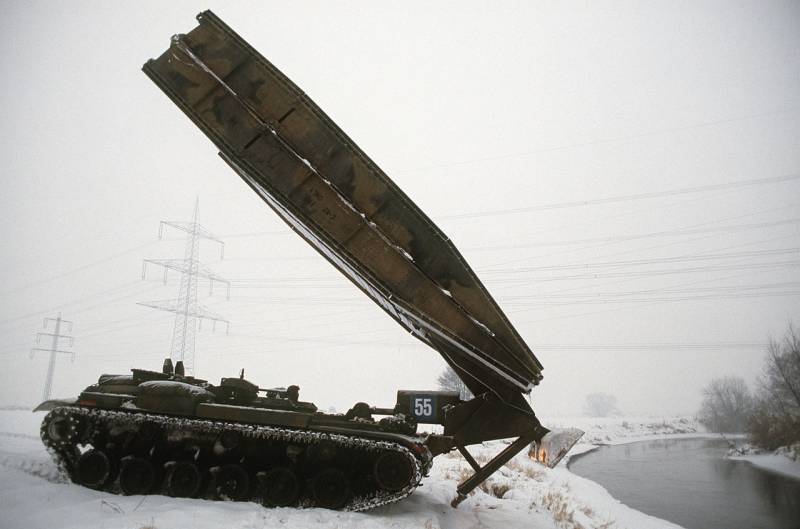
Raising the bridge before laying out
The US Army became the first operator of the M60 AVLB products - all the equipment of the new building was intended specifically for them. Already in the mid-sixties, they had to use bridge layers in a combat situation. A number of such vehicles, along with the M48 and M60 tanks, were sent to Vietnam. Despite all the measures taken, some of the vehicles were lost, which required the production of additional batches in the future.
Very belatedly, only at the end of the eighties, the M60 AVLB entered service with the ILC. Army and Marine bridgelayers have been involved in numerous exercises, and also participated in two operations in Iraq and worked in Afghanistan.
At the beginning of the 60s, an attempt was made to replace obsolete vehicles on the M104 chassis with the new M1074 Wolverine bridge layer. However, he did not live up to expectations, because of which production had to be stopped and rearmament plans reconsidered. A new sample under the designation MXNUMX JABS entered the engineering units only in the middle of the tenth years. The operation of the old AVLBs was forced to continue.
According to The Military Balance, the US Army now has approx. 230 AVLB bridgelayers. Still ok. 30 units remain with the KMP. Part of this equipment was put into reserve and replaced by modern models. The process of re-equipment of units will continue until the complete abandonment of old-type products.
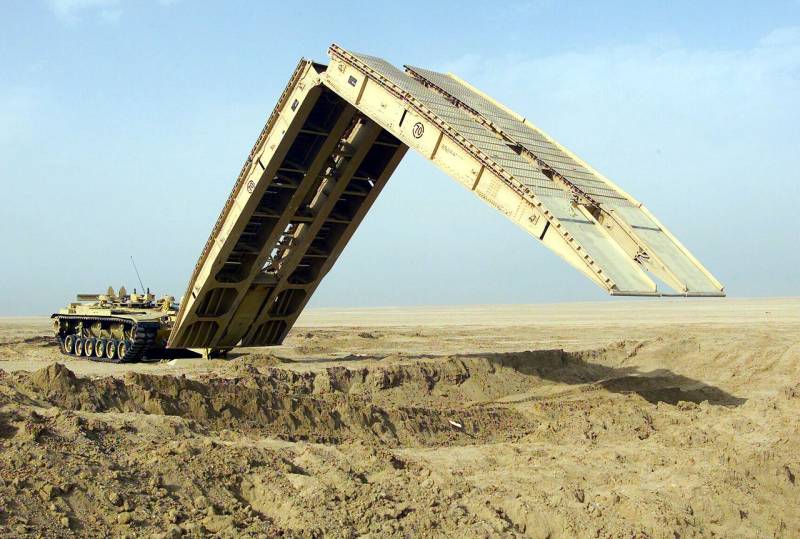
Bridge laying
M60 AVLB bridgelayers, apparently from the presence of the US military, were supplied to several foreign countries. At different times, Greece, Israel, Spain, Pakistan, Portugal, etc. received such equipment. In all cases, no more than 12-14 vehicles were transferred - in connection with a special role on the battlefield. Now it became known that Ukraine will become the next operator. The number of cars for her has not yet been reported.
Technical appearance
Serial M60 AVLB bridgelayers were built on the chassis of the M60A1 modification tank. When converted into an engineering vehicle, the chassis retained the standard body, power plant, chassis, etc. At the same time, the tank lost its fighting compartment with a turret and internal equipment, and also received a number of new devices.
In place of the turret chase, a stub cover was placed with hatches and viewing devices for two crew members, the commander and the operator. In the forward part of the hull, a lowered support with a hydraulic drive was mounted. It contained mechanisms for working with the bridge structure. The mechanisms ensured the layout and installation of the bridge on the obstacle; also with their help, the structure was lifted back to the bridgelayer.
Initially, the M60 AVLB machines were equipped with bridge structures such as MLC 60 (Military Load Classification 60 short ton). It was a track bridge with an overall length of 18,25 m and a carrying capacity of 60 short tons (54,4 t). The bridge had a scissor design and was made of aluminum. Weight - 13 tons. It took at least 3 minutes to lay out and install. Assembly and installation took up to an hour.
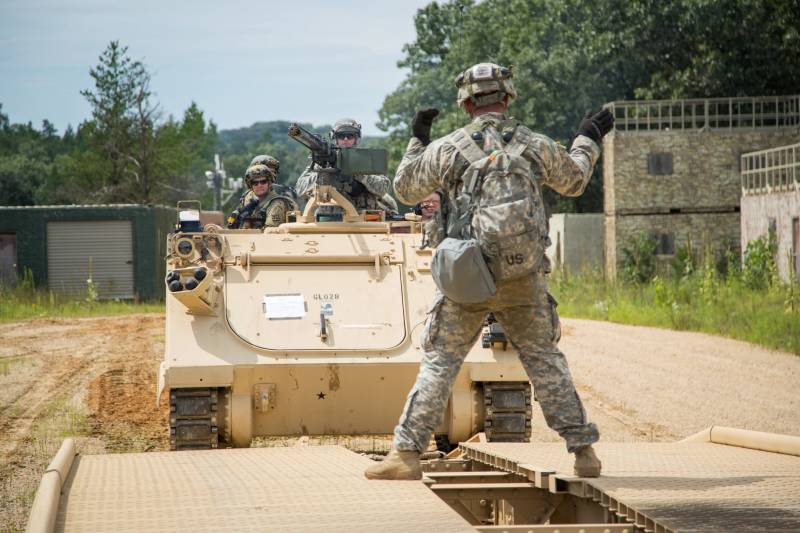
Vehicle entry to the bridge
In the nineties, a modernized reinforced MLC 70 bridge with a load capacity of 63,5 tons appeared. In 2012, additional tests were carried out, as a result of which this bridge was allowed to use vehicles weighing up to 77 tons (MLC 85).
In the absence of the M60 AVLB bridge, it can act as a demining machine. To do this, two launchers are mounted on the hull for an elongated charge M58 MICLIC. In this configuration, the bridgelayer receives the designation AVLM.
Freedom of maneuver
With the collapse of the USSR, the Ukrainian army got a number of old Soviet-made bridge layers. Last year, Germany provided its equipment of this class, and now deliveries from the United States are expected. It is not difficult to guess why such deliveries are made and what their consequences may be.
Apparently, foreign allies, with their deliveries of armored vehicles, are trying to restore not only the combat potential of Ukrainian formations, but also engineering capabilities. Together with the bridgelayers, the Kiev regime will be able to overcome various obstacles, natural and artificial. This will, to a certain extent, expand the possibilities for maneuver, which will help the planning of new operations. Probably, engineering vehicles are going to be used together with other foreign equipment that has already been transferred or has only been promised so far.
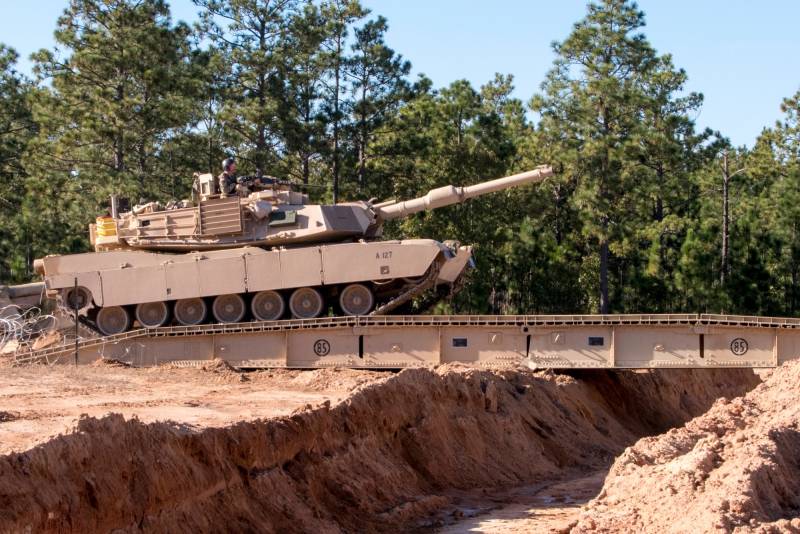
MLC 85 category bridge in action
Obviously, bridgelayers of all types, due to their role and importance for the troops, should be considered a priority target. Timely detection and destruction of such an object can disrupt an offensive operation and deprive the enemy of the initiative.
It can be expected that the solution of such problems will not be associated with great difficulties. Thus, Ukrainian bridge-layers will have to work at the forefront - in full view of our troops. The further defeat of the armored vehicle or the bridge left by it is exclusively a matter of time and technology. At the same time, all bridgelayers transferred to Ukraine, like their bridges, have limited protection and are at great risk when colliding with a wide range of Russian weapons.
Predictable outcome
Thus, foreign patrons help the Ukrainian formations to create a relatively large group of engineering equipment suitable for solving the proposed tasks. It is obvious that such steps and measures are directly related to the military plans of Kyiv and NATO being drawn up.
However, the reluctance to share modern technology and provide a large number of machines leads to known risks. Foreign bridgelayers, both already transferred and being prepared for shipment, risk becoming a target for Russian weapons. The defeat of such a machine at the right time is capable of disrupting the enemy’s operation, as well as contributing to the further destruction of his forces.
Information